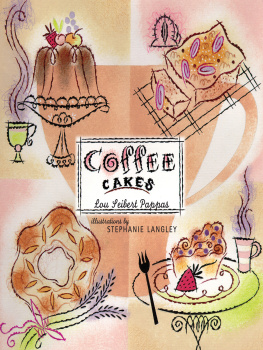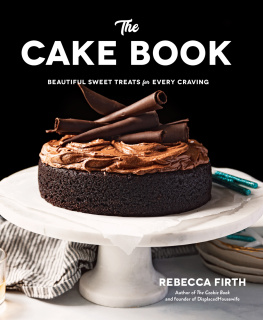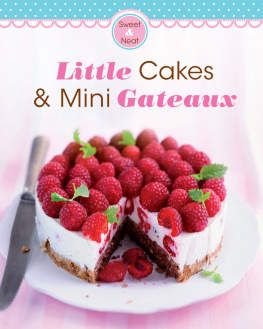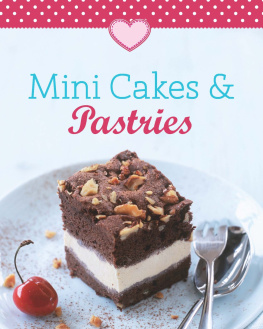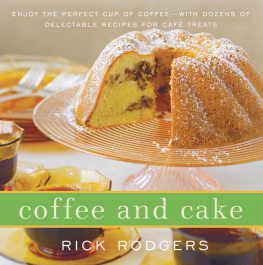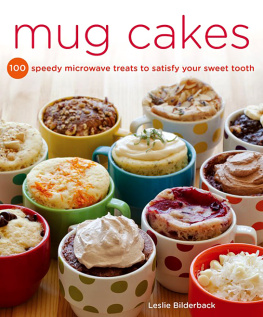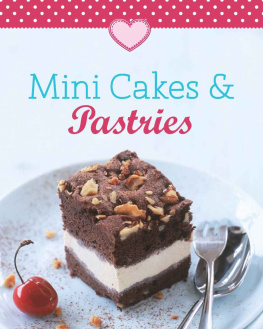
With many thanks to my wonderful over the fence neighbors, Wayne Hoyer and Jim Brennock, and my many tastingparty friends.

The invitation to come for coffee has long meant enjoying a sweet morsel of cake alongside a steaming cup of coffee. The classic coffee cake is a tender, rich butter cake, strewn throughout with fresh berries, nuts, or dried fruit, and topped with crunchy cinnamon-spiced streusel. But equally good are a gingerbread loaf, an apple tart, or a luscious chocolate cake, or even a savory pastry. Step into many coffeehouses and you will see display cases filled with pound cakes, marble cakes, and Italian coffee breads on pedestal plates under glass domes. It is always a treat to munch on a scrumptious home-baked coffee cake as you sip a cup of freshly brewed coffee. Each bite creates a homey, nurturing feeling to brighten the day.
My passion for baking these cakes goes back to my childhood. Growing up in Oregon, I enjoyed yeast breads, blueberry bran buns, and hazelnut-laced brioche as everyday breakfast fare. Chocolate marble cake, banana loaves, and apple or prune-plum tarts were luscious sweets that filled the sideboard for coffee-time and dessert.
I have continued to enjoy this soul-satisfying baking tradition, and blessed with a dozen kinds of fruit trees on my property, I now turn to the garden to supply much of the bounty. The coffee cakes Ive brought together here come in a wide spectrum of flavors. They encompass streusel-topped fruit-filled tarts, elegant fluted Bundt cakes, healthy fruit-and-nut-embellished loaf cakes, and aromatic yeast cakesboth savory and sweet. Classic recipes get an update with sun-dried tomatoes, cured olives, fresh rosemary, and lavender.
These cakes are perfect for breakfast, brunch, or on their own with coffee throughout the day. Sweeter ones fit the role of a true dessert. They may be served plain, or enhanced with a dollop of whipped cream or a scoop of ice cream or frozen yogurt. Savory coffee breads include the beloved focaccia and fougasse styles and polenta cakes, so good as lunchtime or evening fare.
Baking these cakes at home is a rewarding endeavor. The cakes leavened with baking powder and soda are quick and easy to mix. Though yeast breads take longer, the sensual pleasure of working with the doughs provides great satisfaction, and these yeast coffee cakes never fail to enchant those who savor them. Both styles may be baked in advance and frozen, ready to sample on a moments notice.
May you, too, experience the delight of turning out your own oven-fresh cakes to make coffee-time a memorable moment.

Coffee cakes can be divided into two main styles: quick cakes leavened by baking powder and/or baking soda, and those raised by yeast.

Baking powder and baking soda are used to make the batter rise and to give a light texture. They are always mixed with flour to disperse them evenly in the finished product. When eventually mixed with liquid, baking powder and baking soda give off carbon dioxide, which forms bubbles in the batter. During baking, the flour and egg proteins set around the bubbles, creating a lightened texture. Baking soda, or sodium bicarbonate, is always used with acid ingredients, as it would otherwise leave an alkaline flavor after baking. Baking powder already contains a neutralizing acid to avoid that problem.
Yeast coffee cakes demand more time in the kitchen, as the dough must be allowed to rise. Most need three or more hours from start to finish.
Here are some basic tips to help achieve good results when making cakes:
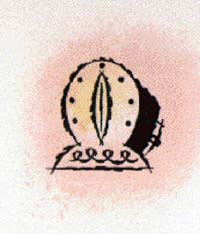
- Have all the ingredients at room temperature.
- Measure accurately, using the correct type of measuring cups for liquids and for dry ingredients.
- The dry ingredients should be stirred together to distribute the leavening, salt, and spices, if used. Sifting is no longer necessary with flour.
- Unsalted (sweet) butter is preferable for best flavor, but you may substitute margarine, if you prefer.
- When a recipe calls for buttermilk, yogurt may be used, or you may substitute sour milk. To make sour milk, put 1 tablespoon fresh lemon juice or distilled white vinegar into a 1-cup measure, and fill it to the 1-cup mark with fresh milk.
- A critical factor in making yeast doughs is the temperature of the water for proofing the yeast. It should be warm105 to 115F, or baby-bottle temperature.
- In recipes where the dry ingredients are stirred into an egg and oil batter, mix by hand or use an electric mixer to speed the process. The batter should be just blended.
- Mix yeast dough thoroughly with a heavy-duty mixer or knead it by hand on a board, five to ten minutes or so. Be careful not to incorporate too much flour into the dough; it should be soft and springy.
- Let a yeast dough rise at room temperature, 65 to 70F, for best texture. The dough should double in size and become puffy. Do not let it overrise, as the texture will become coarse and it may collapse.
- Grease baking pans lightly with a small amount of added butter and, when specified, dust the pan with about 1 tablespoon of flour, shaking to coat evenly.
- Allow ample time to preheat the oven. Also, be sure to check the cake at least 5 to 10 minutes before the specified end of the baking time as ovens vary in accuracy.
- To test for doneness in a baking powder/soda cake, insert a toothpick into the center of the cake. It should come out clean, without flecks of dough on the stick. The color should be golden brown and the cake should just start to pull away from the sides of the pan. Let cakes cool in the pan 5 to 10 minutes after baking to firm up and allow a slight steaming effect to help free the cake from the pan. Loosen the edges by inserting a knife or wooden spreader between the cake and the pan.
- To test for doneness in baking yeast cakes, first check the color; it should be golden brown. Then thump the loaves; they should sound hollow.
- Unmold the cake onto a rack by holding the cooling rack upside down on top of the cake pan and inverting the pan and rack together. If the cake is to be turned top side up, gently hold it in your hands and turn it, or use a second rack and invert it.
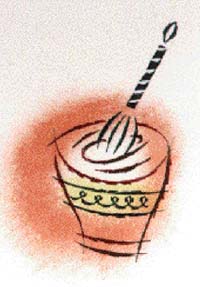
Bake ahead when you have the time. Almost all coffee cakes freeze well for up to three months. Let them cool just to room temperature, then freeze them in self-sealing plastic bags designed for the freezer, not just for storage. Let thaw and reheat, if desired. Some cakes are best eaten warm. If cool or frozen, reheat them in a 325F oven.
Frozen single slices of coffee cake may go from freezer to microwave for a quick defrost and heating. Do not over-microwave, or the baked product becomes tough. Room temperature coffee cake tends to toughen in the microwave; instead reheat it in a 325F oven until hot through.

